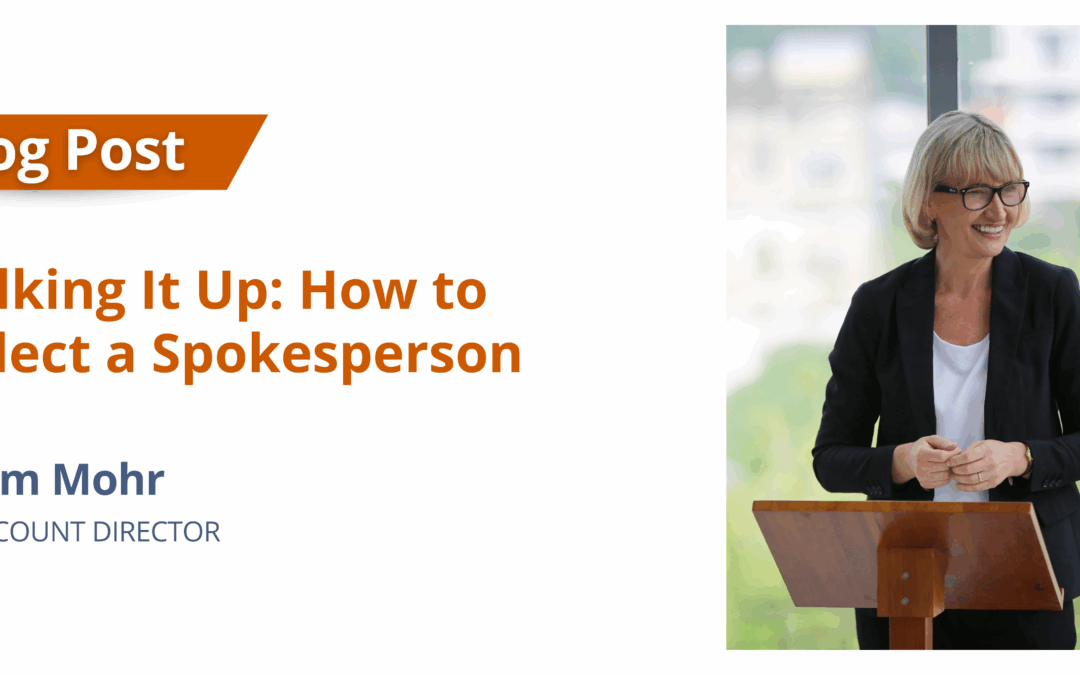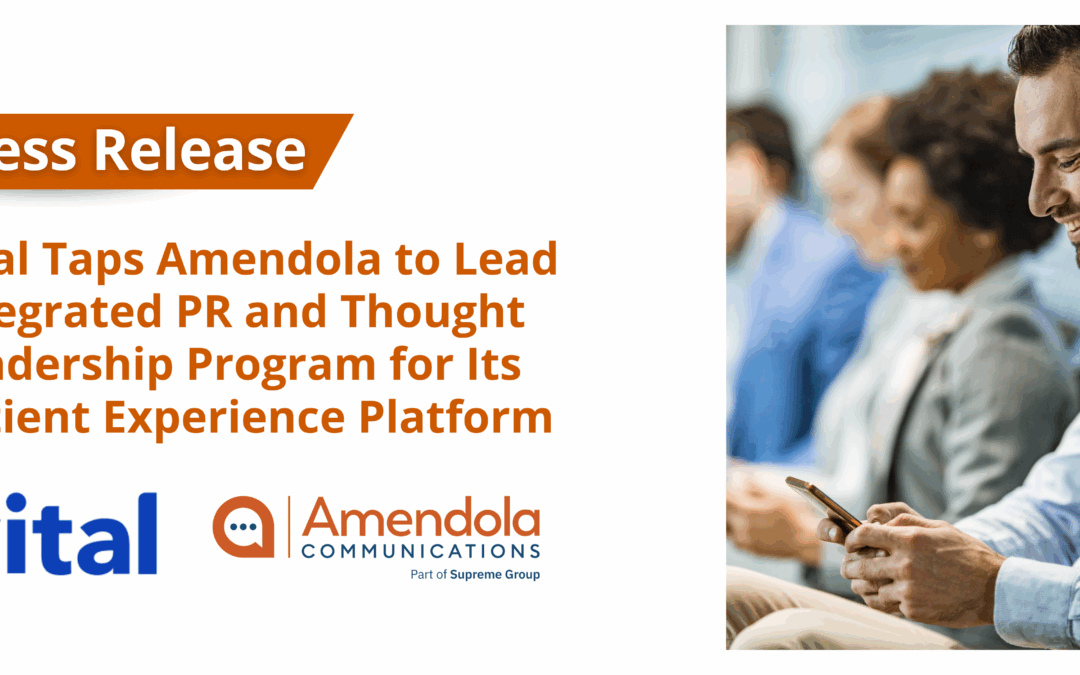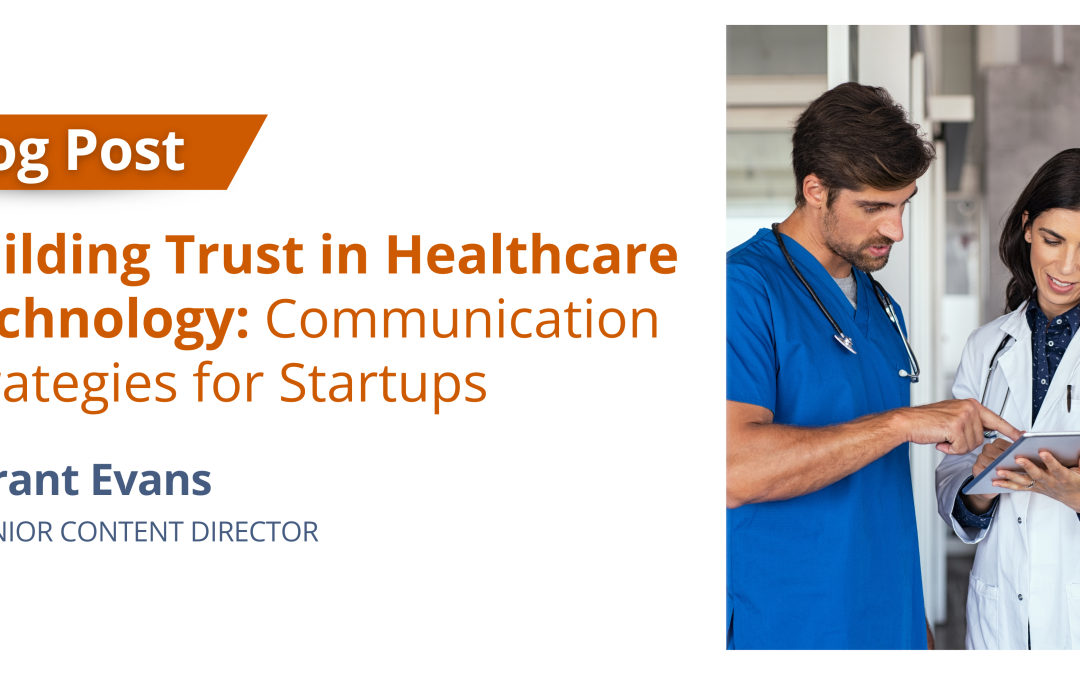
by Administrator | Jun 12, 2025 | News
SCOTTSDALE, Ariz., June 12, 2025 /PRNewswire/ — Amendola, an award-winning, insights-driven public relations and marketing firm that is part of Supreme Group, has been recognized with three prestigious public relations awards—two for achieving exceptional outcomes for health tech clients and another for a major announcement around Amendola’s acquisition last year by Supreme Group.
Amendola earned the following awards:
- Gold Award in the Hermes Creative Awards for Amendola’s thought leadership program that has built the Linus Health brand—and brain health awareness. In its first year working with Linus Health, which is revolutionizing brain health with trusted, science-driven solutions, Amendola secured 165 strategic media placements–with a potential reach of 866.68M–in national and trade publications such as U.S. News, Fortune, Reader’s Digest, MedCity News and Fierce Healthcare. The effort significantly expanded Linus Health’s share of voice and its market presence as a leader in transforming brain health for people worldwide. The multi-pronged thought leadership campaign included a robust earned and owned content program, high-value speaking opportunities at major healthcare conferences such as HLTH 2024, LinkedIn management with impressive increases in followers and engagement, and a strong awards program—culminating in Linus Health winning Best in Class in the Longevity Category in the renowned UCSF Digital Health Awards for 2024.
- Platinum Award in the Hermes Creative Awards for Amendola’s strategy that has elevated Carta Healthcare’s industry position, driving engagement and recognition. Amendola’s campaign strengthened the positioning of Carta Healthcare, whose Hybrid Intelligence platform combines AI with clinical expertise to reduce the time and cost of clinical data abstraction, while yielding the highest quality data. In the first nine months of partnering with Amendola, the campaign produced 150+ targeted media placements, 11 podcast features, 30+ content assets, and three award wins, along with a LinkedIn increase of 1,086 net followers and a 6.3 percent engagement rate. When Carta Healthcare acquired Realyze Intelligence, a company that leverages AI to match patients to clinical trials, Amendola was able to secure 40 stories in top-tier outlets such as Fortune, Axios, and Fierce Healthcare, further bolstering Carta Healthcare’s leadership position.
- Press Event of the Year Winner in the Swaay.Health Health Awards for Amendola’s Campaign in December 2024 Highlighting its Acquisition by Supreme Group. Amendola was the fifth agency to join Supreme’s growing strategic platform (now eight agencies strong) dedicated to providing best-in-class marketing and communications services to a broad range of healthcare and life sciences companies. Supreme Group was formed following Trinity Hunt’s majority investment in the digital agency Supreme Optimization in March 2023.
“We are thrilled to receive these honors that validate the talent, tenacity, and strategic thinking of our team, as well as our amazing client partners,” said Jodi Amendola, president of Amendola. “Our team consistently delivers strategic campaigns that not only earn industry recognition but also drive real business results for healthcare and health IT innovators. We’re grateful to our clients, partners, and stakeholders who helped make these achievements possible.”
Hermes Creative Awards are sponsored by the Association of Marketing and Communication Professionals, which engages senior-level professionals to serve as competition judges who evaluate the creative industry’s best publications, branding collateral, websites, videos, and advertising, marketing, and communication programs. Its annual contest draws thousands of entries from across the globe.
The Swaay.Health Health Awards celebrate the hard work, excellence, and achievements by healthcare marketers over the prior year, and are sponsored by Healthcare Scene.
About Amendola
Amendola, part of Supreme Group, is an award-winning, insights-driven public relations and marketing firm that integrates media relations, social media, content, and lead gen programs to move healthcare, life sciences/pharma and healthcare IT decision-makers to action. The agency represents some of the industry’s best-known brands as well as groundbreaking startups disrupting the status quo. Nearly 90% of its client base represents multi-year clients and/or repeat client executives. Amendola’s seasoned team of PR and marketing pros understand the ongoing complexities of the healthcare ecosystem and provide strategic guidance and creative direction to drive positive ROI, boost reputation and increase market share. Making an impact since 2003, Amendola combines traditional and digital media to fuel meaningful and measurable growth. For more information about the industry’s “A-Team,” visit our website and follow us on LinkedIn.
Media Contact:
Grace Vinton, Amendola Communications
gvinton@acmarketingpr.com
# # #

by Kim Mohr | Jun 10, 2025 | Blog
Many times, when we think of a brand that we know and love, we automatically associate that organization with the person who represents it in the public forum. Apple, the Dallas Mavericks, Nike and Microsoft have all had a notable spokesperson associated with their brand. While you may not have Michael Jordan on your bench, it’s as important for your organization to have a trusted frontman or woman to tell your story to the world.
So, Who Should You Choose?
While it may seem like a given to choose the head of your company, a recent article from pr.co cites research that shows the CEO is not always the way to go. Sure, the top boss might know the company and the technology better than anyone else, but does that person have what it takes to relay this knowledge in a relatable way that members of the media and the public can grasp and connect with?
When selecting a spokesperson, credibility is key. Even if your company exec is an expert on your product or service, it’s of the utmost importance that they have experience and knowledge that extends beyond the company talk track. Often, executives who have lived another life as a clinician, health system leader or hands-on data engineer make great spokespeople. They have worked through and grappled with the technology your solution is solving and can speak firsthand to the perils of the problem and the importance of a solution to like yours. Titles such as Chief Medical Officer and Chief Nursing Officer are often great choices. We’ve recently seen great interest in Chief AI Officers, and these executives are often adept to speak not only to the current state of technology, but they can offer insights into how we could see technology change in the near and long term.
Importantly, would you find the person you’re considering to speak for your company interesting to talk to over coffee or at a dinner party? Do they have a unique perspective? Are they passionate about finding a solve to the problem you are addressing? Media are people too, and just like you, they can get bored easily if a spokesperson comes across as static or rehearsed.
Another consideration: In key strategic situations, a company may select someone who is controversial to speak for the organization. Generally speaking, it’s best to avoid someone who runs the risk of alienating your customer base. If you’re considering a controversial or confrontational figure, work closely with your PR agency and internal stakeholders to weigh the pros and cons.
The more, the merrier?
A mistake some companies make lies in thinking they must choose just one person to speak for the company. This couldn’t be further from the truth. While you do want to maintain a consistent brand voice and drive home key talking points that have been determined through a thoughtful process, it is perfectly fine and often even preferable to have more than one spokesperson.
When using multiple spokespeople, differentiate based on each person’s area of expertise. Perhaps your CEO would be the one to give an interview to Axios a funding round, while your CMO would talk about the challenges of clinician burnout in a chat with a provider-focused podcast. Be deliberate when determining how many people will speak for your company. While a couple key leaders focused on disparate topics is great, too many voices can muddy the message and leave your audience confused. Additionally, determine who will speak for the company during a crisis (often your CEO or board chair) and develop a crisis communications plan that is shared with all relevant stakeholders in advance.
How to Build a Thought Leader
Once you have determined who will speak for the company, create a plan to introduce that person to the company. A PR plan should include thought leadership articles from your spokesperson that will be pitched and placed in key trade publications. To build credibility for your spokesperson and to secure earned placement, these pieces should cover a topic relevant to your space and avoid direct mention of your company. If your piece sounds like a sales pitch for your tech, it won’t see the light of day. Further, develop a social media content calendar that details posts for the company and your key spokespeople. Your audience wants to see that your leadership is part of the conversation in their area of expertise, so posting relevant articles from outside your company as well as engaging with outside content are all effective strategies.
A key part of being a spokesperson is, of course, speaking. Well before you schedule your first interview, schedule comprehensive media training for anyone who might be speaking on the company’s behalf. Amendola Director of Media Relations Grace Vinton offers tips for making the most of opportunities.
When it’s time to pitch, again, focus on broader areas of interest and prepare talking points in collaboration with your spokesperson and other stakeholders. You’ll often be given the chance to talk about what makes your company different, but let’s face it – no one likes someone who only talks about themselves all the time.
Additional Pitching Opportunities
While we often focus on health tech and healthcare trade publications and podcasts, Amendola Senior Writer Brandon Glenn reminds us in this recent blog post not to neglect mainstream media. Consumer and local outlets can provide golden opportunities in the right situations. Business publications such as the Wall Street Journal will often publish hiring news, so this can be a great option if your spokesperson has recently joined the company – a great way to get their name in front of a large audience. Axios loves big financial news, so if your spokesperson is willing to talk about a recent funding round or lucrative business deal, don’t overlook this mainstream outlet. Are you hosting a user meeting or participating in a charity even in the city where you’re headquartered or elsewhere? Try for an interview with the local business journal or morning news show.
Remember, too, that media is changing. While landing big publications is often the goal, smaller outlets can offer a precise target audience. Increasingly, bloggers and hosts of smaller podcasts are targeting the very audience you’re trying to reach.
Conclusion
Selecting a spokesperson is one of the biggest decisions you’ll make for your company. But don’t worry – remember these steps that we’ve covered here and you’ll be on your way to putting your company on the right path.

by Chris Nerney | May 28, 2025 | Blog
Some health technology entrepreneurs are absolutely convinced their company has a unique, revolutionary solution that will transform healthcare. And they will not hesitate to tell you!
Most, however, are more grounded. They only have to look around to see that the problems their solution is designed to solve – whether it’s clinical data quality, patient identity, billing accuracy, etc. – have attracted the interest of other clever and well-intentioned people. They have competition! Worse, some of these sector rivals are well-funded.
Which doesn’t mean your solution is any less genuinely transformative to healthcare consumers, providers, payers, or researchers. What it does mean is you likely face a formidable challenge in rising above the noise in your sector to attract and capture the attention of potential customers and investors. After all, there are a lot of stories being told out there.
So how can healthcare PR and marketing pros make their company’s story compelling enough to break through and stand out in a crowded market? For starters, health tech companies can gain a market advantage by clearly articulating (and repeating) across multiple channels what problems their solutions solve and how these solutions benefit patients. Why should customers choose your solution and not a competitor’s? You need a great answer to that question.
Hone your marketing language to highlight your company’s competitive differentiators. Once you’ve locked in on a framework for your messaging, you can deploy several specific techniques to help your health tech company rise above the clamoring masses. These include:
Practice precision marketing
The marketing messages that resonate with potential customers such as provider organizations or payers may not resonate with investors. While a hospital or health plan will want to know what your technology costs and how it would help them improve care quality or operational efficiency, they’re not interested in a graphic showing the projected growth of your startup’s market sector. Investors, on the other hand, care deeply about a sector’s growth potential as well as a prospective portfolio company’s strengths and weaknesses (particularly its technology and leadership team) relative to the competition.
It is essential that you learn the needs and pain points of each target audience and then tailor a message that specifically addresses them. Try to get feedback from members of your target audience (or people who understand their concerns and priorities) and then modify as necessary.
Go multimedia
We may be in the technology business, but humanity sells. The human connection is a powerful thing; people like to hear and see other people talk. That’s one of the reasons why podcasts have become so popular. If there is someone in your company who could shine on a podcast, do not hesitate to get that person some training and some bookings.
No matter how nervous your subject matter expert may be, once they see the positive response internally and externally, they’ll be pestering you for more podcast opportunities. Then they’ll ask for help getting an agent.
You also can use multimedia in social media and in press releases. Spice up your messaging with pictures, graphics, and even short videos. You won’t need to hire a crew for a three-camera shoot, either; videos can easily be recorded on a smartphone.
Get customers to tell their story
I know, it’s one of the hardest things in marketing. A health tech company’s customers – whether they’re a hospital, health system, payer, or academic center – may not want to get involved in your marketing efforts because 1) they’re pretty busy doing their own jobs, and 2) they worry about being perceived as shills for a vendor. From their perspective, those aren’t unreasonable concerns.
But you won’t know what your customers say until you ask. Suggest doing a white paper on their experiences with your solution or ask for one of their spokespeople to join you on stage at an industry conference or for a podcast. People like to talk about their successes and impart advice to colleagues. It’s all upside to them.
One great selling point for healthcare marketing and PR pros who are trying to get a customer to share their experiences is to emphasize that the customer’s story (and yours) centers around how they were able to better serve patients using your technology, not the merits of the technology itself (which should be apparent in the telling of the story). Again, it’s an opportunity for the customer to talk about what they’re doing to help patients, research, or efforts to control healthcare costs.
Conclusion
To succeed in highly competitive markets, health tech vendors need a coherent message centered around how their solution benefits both patients and potential customers. By tailoring these messages to targeted audiences, leveraging the power of multimedia to build human connections, and working with customers to communicate powerful success stories, health tech vendors truly can stand out in a crowded market.

by Administrator | May 6, 2025 | News
SCOTTSDALE, Ariz., May 7, 2025 — Vital, the AI-powered patient experience platform used by leading U.S. health systems, has chosen Amendola Communications, part of Supreme Group, to spearhead an integrated PR and thought leadership program targeting healthcare IT and clinical audiences.
“Amendola came highly recommended by an industry veteran and brings exactly what we need: deep healthcare expertise, senior-level account directors, and strong health tech media relationships,” said Aaron Patzer, founder and CEO of Vital. “We’re excited to spotlight the concrete financial, operational, and experience improvements health systems are achieving with our platform.”
Amendola’s integrated program will support awareness and growth for Vital’s expanding product suite — Vital Emergency, Vital Inpatient, and Vital Care — all designed to simplify and improve the patient journey. The platform sends real-time updates, education, and actionable information to patients and families in their preferred language without requiring logins or app downloads.
“Vital is changing the game by enabling real-time communication in healthcare that mirrors what consumers expect from other industries — from package tracking to travel alerts,” said agency CEO, Jodi Amendola. “It’s a powerful story we’re excited to help tell.”
Amendola will support Vital’s growth through a strategic blend of media outreach, thought leadership, and targeted content development aimed at healthcare decision-makers.
About Vital.io
Vital (Vital.io) is an AI-powered patient experience company on a mission to make the patient journey better—for everyone. Real-time updates, predictive wait times, plain-language explanations of test results, and simplified discharge instructions all help patients feel valued and reassured. Because, the experience matters as much as the medicine. Ranked by KLAS as #1 in patient experience, Vital achieves concrete results: 30–50% fewer LWOBS/AMA, 10–15% higher NPS, stronger HCAHPS scores, reduced ED returns, and 5–7% lower 30-day readmissions. Designed to integrate seamlessly with existing EHR systems, Vital provides a user-friendly interface that engages patients, resulting in 60%+ adoption rates, 5-10x higher than the competition. View our product overview.
Media Contact:
Marcia Rhodes / mrhodes@acmarketingpr.com

by Grant Evans | Mar 19, 2025 | Blog
In healthcare technology, trust isn’t just a marketing goal—it’s the foundation of success. While established healthcare brands leverage decades of reputation, startups face the unique challenge of building credibility from scratch in a sector where mistakes can have serious consequences.
Leveraging Expertise Strategically
Your team’s credentials and experience are your first trust-building assets. However, many health tech startups underutilize these valuable proof points. Beyond simple bio pages, consider developing thought leadership content that showcases your team’s deep understanding of healthcare challenges and solutions. Regular blog posts, whitepapers, and speaking engagements help position your experts as reliable voices in the field.
Data-Driven Credibility
Original research and survey data are powerful trust-building tools. Consider conducting annual industry surveys that explore healthcare technology trends, challenges, and adoption patterns. This primary research can fuel an integrated content strategy:
- Transform survey insights into comprehensive ebooks and whitepapers
- Create press releases highlighting key findings for media coverage
- Develop social media campaigns featuring data points and infographics
- Gate premium content to capture leads while building authority
- Use data points in media pitches to secure coverage and commentary opportunities
This approach positions your startup as a knowledge leader while generating valuable marketing and PR opportunities. Media particularly value exclusive data, making your startup a go-to source for industry insights.
Establishing Partnerships
Strategic partnerships with established healthcare institutions can significantly accelerate trust-building. Whether it’s pilot programs with hospitals, research collaborations with medical schools, or integration partnerships with established health tech platforms, these relationships signal credibility to your target market.
Many successful health tech startups begin by focusing on a single respected partner, perfecting their solution in a real world environment before expanding. This approach provides valuable case studies and testimonials—essential tools for building broader market trust.
Demonstrating Compliance and Security
In healthcare, compliance isn’t just about checking boxes—it’s about protecting patients. Clear communication about your regulatory compliance status, security measures, and data protection protocols is crucial. Consider creating dedicated security and compliance content hubs that explain complex requirements in accessible terms.
Be transparent about your current stage and future roadmap. If you’re still working toward certain certifications, communicate your progress and commitment to meeting industry standards.
Creating Evidence-Based Content
Healthcare decisions require solid evidence. Develop content that demonstrates both your solution’s effectiveness and your understanding of healthcare’s complexities. This might include:
- Detailed case studies with measurable outcomes
- Research collaborations and clinical validation studies
- Regular analysis of healthcare trends and challenges
- Clear explanations of your technology’s scientific foundation
Building Media Relationships
Focus on building relationships with healthcare technology journalists and influencers before you need coverage. Provide them with genuine insights, exclusive data, and expertise, not just company news. When you do have news to share, these established relationships will help ensure more informed, credible coverage.
Leveraging Agency Expertise
For many health tech startups, partnering with an experienced communications agency can accelerate trust-building efforts. The right agency brings established media relationships, content development expertise, and integrated campaign experience. They can coordinate media and analyst relations while developing compelling content that showcases your expertise.
However, success requires more than just hiring an agency. Designate a dedicated in-house resource to serve as the primary liaison. This person should facilitate content approvals, coordinate subject matter expert interviews, and monitor industry developments that could fuel new content or media opportunities. This partnership approach ensures your agency can execute effectively while maintaining alignment with your company’s goals and expertise.
The Long Game
Trust in healthcare technology isn’t built overnight. A consistent, multi-channel approach focused on expertise, evidence, and transparency will gradually establish your startup as a credible player in the healthcare ecosystem. Remember, in healthcare technology, trust isn’t just about marketing—it’s about demonstrating your commitment to improving patient outcomes and advancing healthcare delivery through validated, data-driven approaches.
Page 1 of 3112345...102030...»Last »





